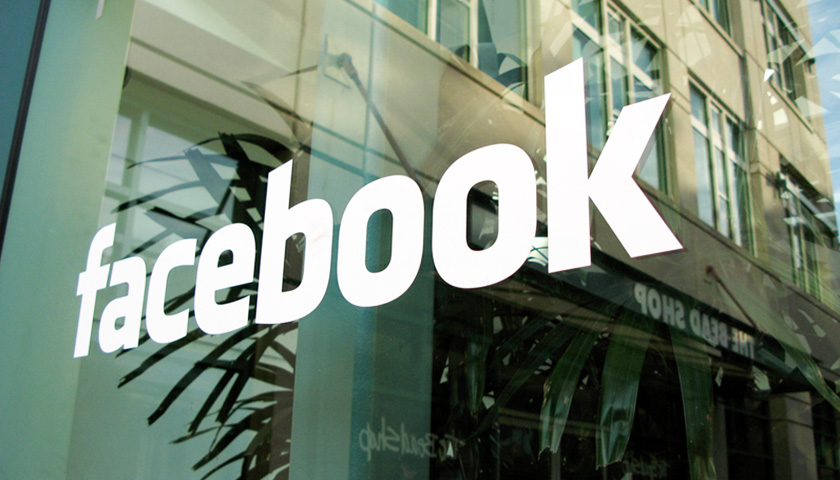by Mason Stauffer
Meta recently took “what appears to be the largest known cross-platform covert influence operation in the world,” off its platforms, according to the company’s quarterly Adversarial Threat Report released this week.’
The social media accounts that made up the covert influence operation — collectively dubbed “Spamouflage” — were active all over the world, including in America, major U.S. allies, Taiwan, and the Chinese diaspora.
The operation spread across 50 different platforms, such as major players like X (formerly Twitter), Facebook, YouTube, and TikTok, as well as smaller sites like Pinterest, Vimeo, and even TripAdvisor. Spamouflage’s mouths are considerable: The company claims it took down 8,673 accounts, pages, and groups from Facebook as well as a handful of Instagram accounts.
Though the numbers are high, the network appeared to have had low impact. Meta researchers report that most of Spamouflage’s followers came from bots based out of Brazil, Bangladesh, and Vietnam — not actual people, let alone actual people in the target countries.
Meta has been fighting this network for years. It first came under fire in 2019 when it broke community standards by engaging in “coordinated inauthentic behavior,” wherein a group of users that pretend to be separate and disconnected but actually are part of the same organization work to push a specific narrative. The narrative in question attacked the West and others who criticized Beijing, as well as spread the Chinese Communist Party’s view on controversial topics like Xinjiang.
Spamouflage’s behavior is a good example of inauthenticity: Account activities followed a workday schedule with activity separated by meal breaks at the appropriate time for China’s time zone. They used various techniques to disguise their location and source, but Meta researchers were able to place them geographically in China and connect them to Chinese law enforcement.
Spamouflage the ‘Doppelganger’
China isn’t the only foreign actor Meta has investigated, the report highlights. The Russian propaganda network “Doppelganger” was unmasked last year by Meta as the work of two Russian companies — both of which the European has since sanctioned — but continues “attempt[ing] to stay afloat.”
Doppelganger works to weaken support for Kyiv, specifically by “trying to pick off some of Ukraine’s international allies over time.” Originally, the network “target[ed] France, Germany and Ukraine,” but it has now expanded into the United States and Israel.
According to Meta, Doppelganger’s strategy consists of two basic steps: First, “spoof” major news websites — like Fox News or the Washington Post — to create forged articles that look authentic; second, commit major resources to spreading those forgeries across the internet. Using so many resources at once, however, increases the likelihood of summoning Meta’s all-seeing eye and having the propaganda accounts removed.
Doppelganger has also gone beyond news sites to forge foreign government domains, including those of Ukraine, Poland, Germany, and even NATO.
The amount of detail the network puts into some of the forgeries can make them appear quite convincing, yet, overall, Doppelganger’s focus seems to be on quantity over quality. Indeed, Meta reports that it “ha[s] not observed this network’s fake accounts and Pages being amplified by real people.”
Nevertheless, researchers have described the network as “persist[ent].” Meta states: “We’ve blocked over 2,000 of the operation’s domains from being shared on our platform.… We also blocked tens of thousands of attempts to run [Doppelganger’s] fake accounts and Pages on our platforms.”
Are Russia and China Propaganda Partners?
Interestingly, Meta’s report indicated that the Chinese and Russian influence campaigns may be cooperating.
Researchers noticed that the tactics used by Spamouflage were very similar to a separate Russian propaganda network known as “Secondary Infektion,” which Meta “first exposed in 2019.”
Both Spamouflage and Secondary Infektion first promoted their messaging “on smaller platforms before attempting to share links to it on larger ones.” They also published in a variety of languages, including some rare ones like Welsh and Latin; used niche platforms “rarely or never seen to be used by any other known influence operations”; and routed narratives through a wide variety of platforms in the attempt to hide the origin — a practice known as narrative laundering.
Meta researchers emphasized that these similarities do not confirm that the two networks are partnering — public reports could have allowed both to adopt the tactics independently.
Regardless, with the major role social media plays in our lives and its capacity to quickly spread a narrative throughout American society, the propaganda networks hostile foreign powers use to attempt to influence American public opinion will continue to be a threat.
– – –
Halfway through earning a master’s in national security at the Institute of World Politics, Mason Stauffer is part of The American Spectator’s 2023 intern class.
Photo “Facebook HQ” by Marco Paköeningrat. CC BY-SA 2.0.





